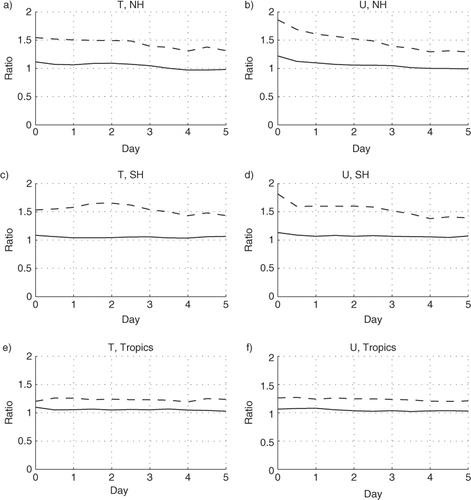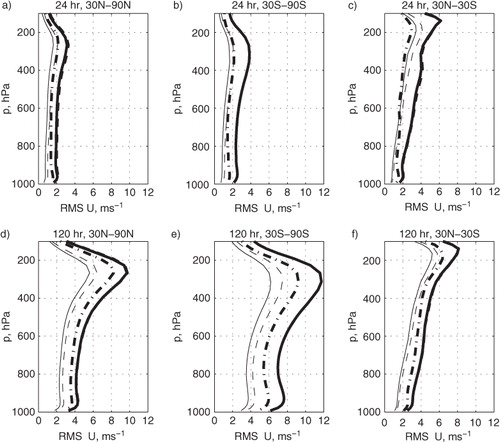Figures & data
Table 1. Description of all OSSE experiments included in this article
Fig. 1 Global analysis root-mean-square error (RMSE) for July. Left column, 30N–90N; centre column, 30S–90S; right column, 30S–30N. Top row, temperature (K); centre row, zonal wind (m s−1); bottom row, specific humidity (kg kg−1). Solid heavy line, NE experiment; heavy dashed line, Control experiment; heavy dash–dot line, DENSE experiment; thin solid line, Twin NE experiment; thin dashed line, Twin Control experiment.
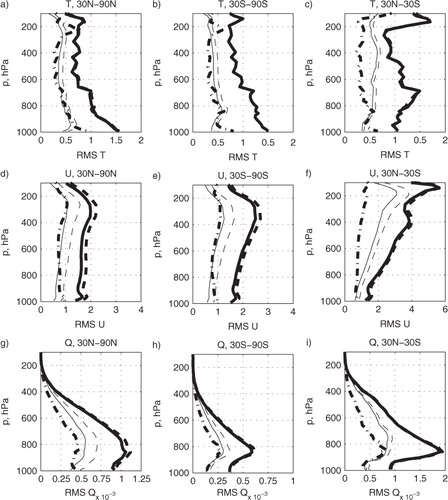
Fig. 2 Monthly mean analysis error on select model surfaces for the experiments in July, longitude on x-axis and latitude on y-axis. Left column, temperature at 500 hPa, K. Right column, zonal wind at 250 hPa, m s−1. Note varying contour intervals between panels.
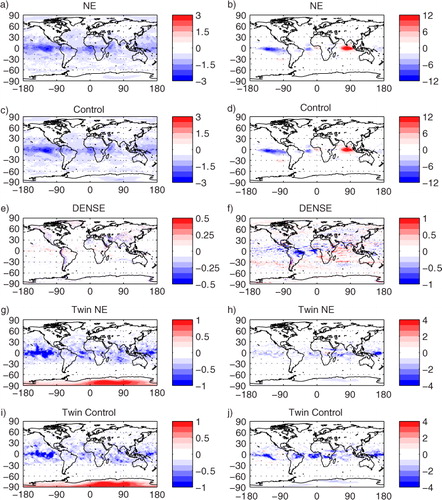
Fig. 3 Zonal mean time mean analysis increment (left column) and MAER (right column) for temperature (K), July, η-level pressure on y-axis and latitude on x-axis. Negative values of MAER indicate an improvement of the analysis field compared to the background. Note different contour range for Twin and ECMWF NR experiments.

Fig. 4 Zonal mean time mean analysis increment (left column) and MAER (right column) for zonal wind (m s−1), July, η-level pressure on y-axis and latitude on x-axis. Negative values of MAER indicate an improvement of the analysis field compared to the background. Note different contour range for Twin and ECMWF NR experiments.
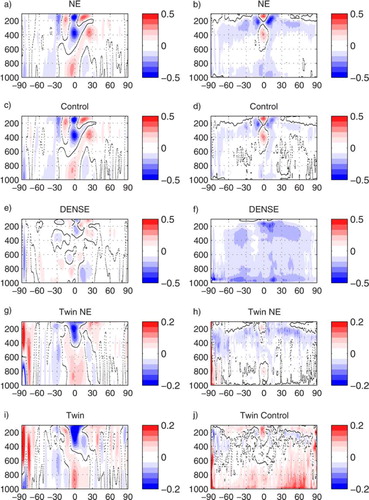
Fig. 5 Zonal mean variance in time of the analysis increment for temperature (K2), left, and zonal wind (m2 s−2), July mean.
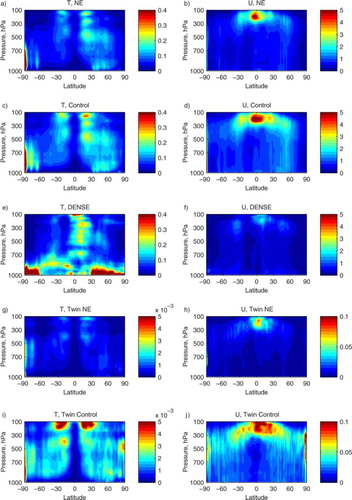
Fig. 6 Forecast root-mean-square error (RMSE) for temperature, July mean. Left column, 30N–90N; centre column, 30S–90S; right column, 30S–30N. Top row, 24 hour forecast; bottom row, 120 hour forecast. Solid heavy line, NE experiment; heavy dashed line, control experiment; heavy dash–dot line, DENSE experiment; thin solid line, Twin NE experiment; thin dashed line, Twin Control experiment.
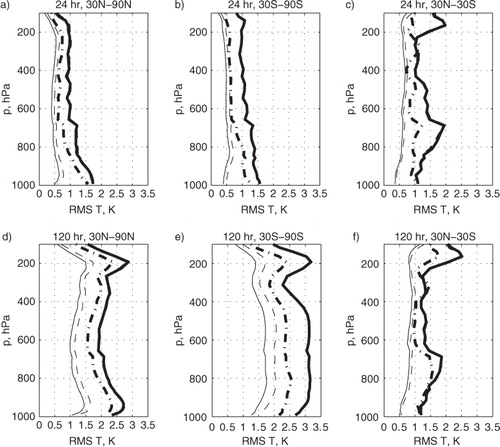
Fig. 8 Global error variance as a function of forecast time, July mean. Left column, 500 hPa temperature (K2); right column, 250 hPa zonal wind (m2 s−2). Top row, 30N–90N; centre row, 30S–90S; bottom row, 30N–30S. Solid heavy line, NE experiment; heavy dashed line, control experiment; heavy dash–dot line, DENSE experiment; thin solid line, Twin NE experiment; thin dashed line, twin control experiment.
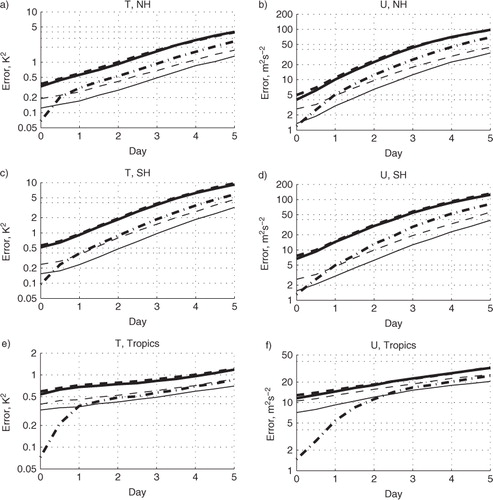
Fig. 9 12-Hour forecast error variance minus the analysis error variance for the month of July. Left column, temperature variance (contour interval 0.1 K2) on model surface nearest 500 hPa; right column, zonal wind variance (contour interval 1.5 m2 s−2) on model surface nearest 250 hPa. x-axis, longitude; y-axis, latitude. Top, DENSE experiment; centre, Control experiment; bottom, Twin Control experiment.
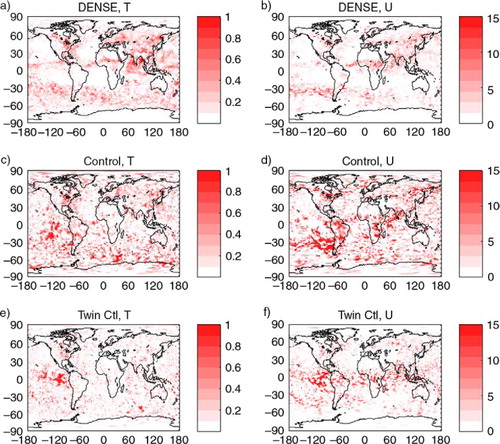
Table 2. Doubling times in days for RMSE of temperature and zonal wind, calculated using a fit to forecast error from 48 to 96 hours
Fig. 10 Ratio of areal mean error variances as a function of forecast time between the Control and NE experiments (solid line) and between the Twin Control and Twin NE experiments (dashed line), July. Top row, 30N–90N; centre row, 30S–90S; bottom row, 30N–30S. Left column, ratio for temperature at 500 hPa; right column, ratio for zonal wind at 250 hPa.
